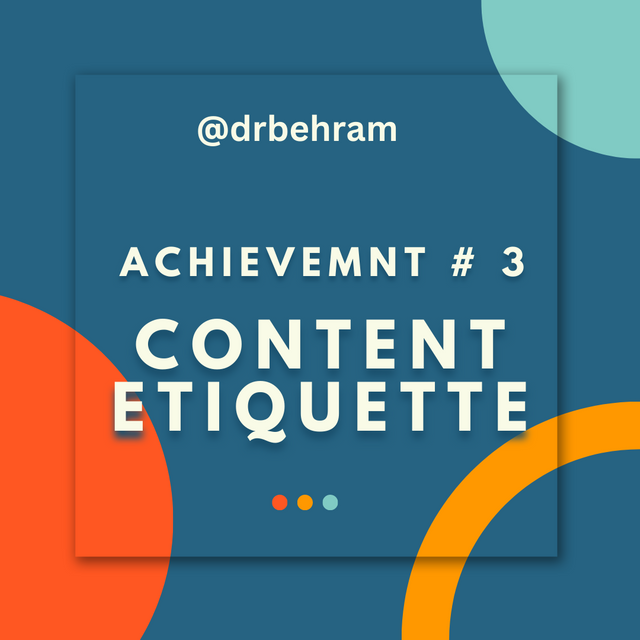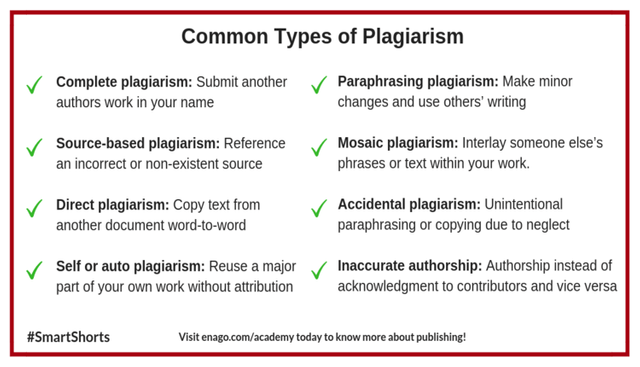Achievement 3 by @drbehram Task : Content Etiquette
achievement 3 |
|---|
Hello everyone hope you are doing okay and enjoying your daily life!
So I read about the 3rd achievement today and learned a lot of new things so I am
sharing my new understanding about Content Etiquete and Plegarism.

Objectives of this Task is:
- Newcomers have knowledge on Proof of Brain concept.
- Newcomers have basic knowledge on producing and sharing quality/original content.
- Newcomers embracing the existing Steem Community etiquette.
| PALGRISM | . |
|---|
Plagarism is the act of presenting someone elses work or ideas as ones own without proper atribution or permision. It is a serious ethical and legal issue with serious implications in academic professional and personal contexts
- Copying and pasting text from a source without citation, paraphrasing someone else's ideas without giving credit using someone elses images videos or other media without permission and submitting work created by someone else as ones own are all examples of plagiarism
How to avoid
To avoid plagiarism, it is important to always cite sources properly, use quotation marks or block quotes when directly quoting someone else's work, and reference any borrowed ideas or concepts appropriately. It is also a good idea to use plagiarism detection software or services to check for any unintentional instances of plagiarism before submitting work for grading or publication.
Types
There are many types of Plagiarism but I am explaining the most 8 common types here.
- Complete Plagiarism.
- Source Base Plagiarism.
- Self Plagiarism.
- Paraphras Plagiarism.
- Mosaic Plagiarism.
- Accidental Plagiarism.
- Direct Plagiarism.
- Inaccurate Authership.
| Citations | . |
|---|
Citations are references to information sources used in a published material. They provide evidence and support for the text's claims and enable readers to verify and locate the original sources of information.
Citations are necessary in academic and professional writing because they demonstrate the writer's credibility and acknowledge the authors and researchers whose work has been used.
APA (American Psychological Association), MLA (Modern Language Association), Chicago, and Harvard are among the citation styles used in various academic disciplines. Each style has its own formatting and organisation rules for citations, including the use of in-text citations and reference lists or bibliographies.
A citation should typically include the name of the author, the work's title, the year it was published, and any pertinent page numbers or identifiers. Depending on the citation style being used, this material will be formatted and placed in a particular order.
Any references utilised in a published piece of work, including direct quotes, paraphrased passages, and ideas or notions that are not generally accepted, must be cited. Failing to properly credit sources might lead to plagiarism charges and have serious repercussions.
EXAMPLE
"Age-related macular degeneration (AMD) affects a person’s central vision. It becomes more common after the age of 60 yearsTrusted Source. The first sign of AMD is often blurred vision" Source
SO THATS MY ACHIEVEMENT 3 POST HOPE YPU GUYS LIKE IT

Congratulations, Dr. Behram , on completing Achievement 3 on Steemit! Your post on content etiquette is informative & well-written, providing valuable guidance for fellow Steemit users. It's great to see you taking your Steemit journey seriously & striving to improve your skills. Keep up the good work!
thank you @karimshah bhai bas aplogo ka support hai
@goodybest
@juichi
@ripon0630
@wilmer1988
@tocho2
@radjasalman
@adeljose
plz verify my post